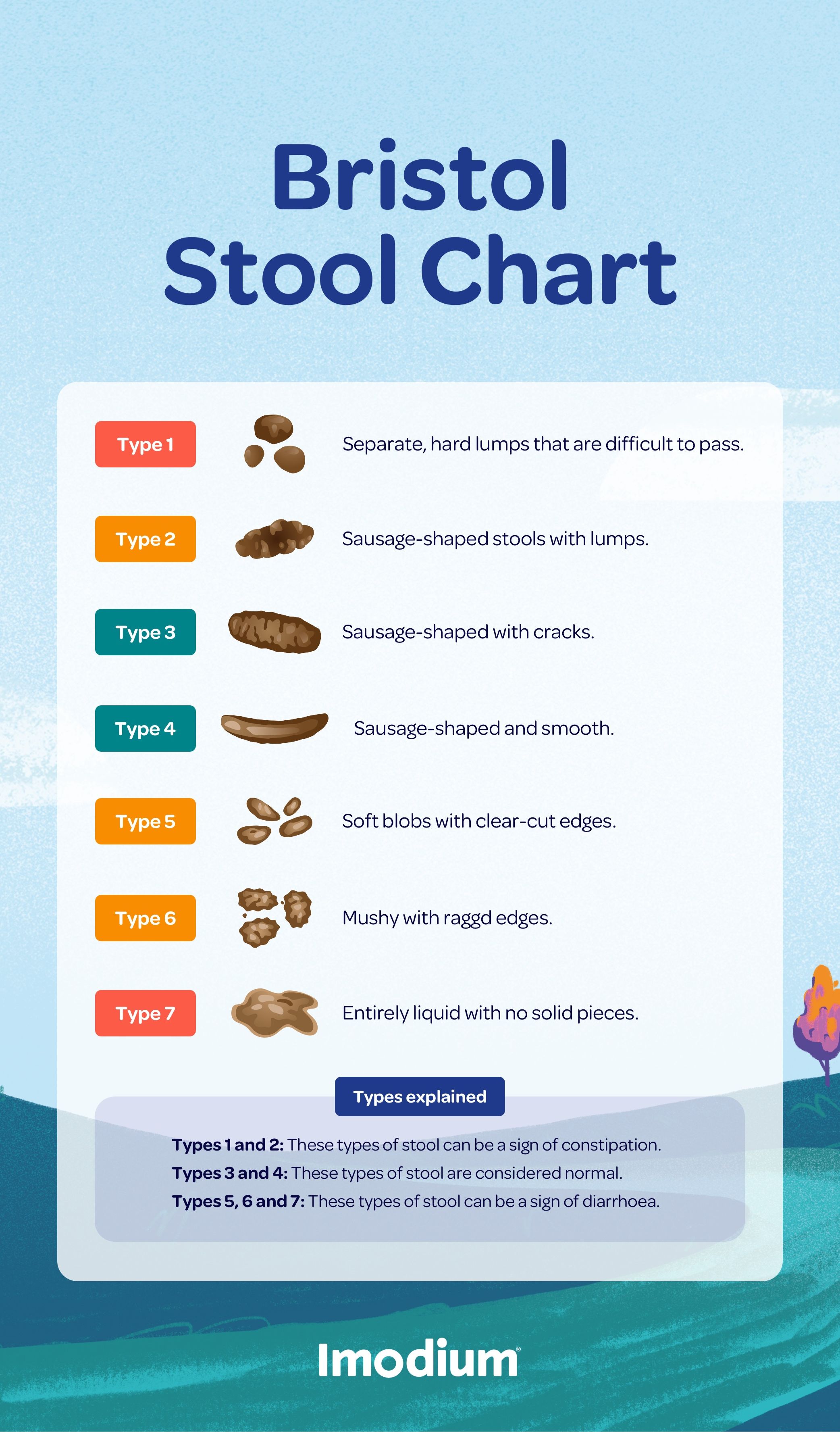Stool types
Stools are a normal part of the digestion process but they can change in terms of their size, consistency, shape, colour and odour . Find out what these changes can mean and what can cause them.
What should your stools look like?
Our digestive systems break down what we eat into smaller molecules which are then carried in our blood to where the good stuff in them – the nutrients – are needed.
Our poop contains what’s left once these nutrients have been absorbed – which is mostly bacteria and water, along with fibre and bile.
Everyone’s poop differs in terms of size, shape and smell but there are a few things that normal stools usually have in common:
Stool colour
Stools are generally brown in colour due to the presence of bilirubin, a pigment that forms when red blood cells are broken down.
Your poop colour can also be affected by what you eat . However, if your stools are darker or paler or a different colour than normal, it's worth checking with your doctor as it can be a sign of something more serious.
Stool shape
A typical or more normal is shaped like a sausage – and these are the easiest to pass . It could have cracks on its surface or be smooth and soft.
Stool smell
The bacteria in stools releases gases, which means it’s perfectly normal for there to be a smell when you go to the toilet.
If your poop consistently has a really strong odour then it may be down to what you’re eating. The smell could be caused by the faeces sitting in your system for longer than usual.
Try to make sure you’re getting lots of fibre in your diet, along with plenty of fruit, vegetables and exercise, and the smell may start to become less noticeable.
Flush away easily
Stools that float in the toilet bowl and are difficult to flush away can be a problem . Drinking plenty of fluids and eating a healthy diet may resolve the issue, but if it continues it’s worth mentioning it to your GP.
Similarly, stools that stick to the toilet are fairly common but could be caused by excess mucous, which may be a sign that you could do with adding more fibre to your diet.
Stool consistency
The consistency of your stools can depend on many things such as diet, stress, exercise and how long they have spent in the colon, where liquid is absorbed.
Frequency of stools
Everyone is different when it comes to how many times they go to the toilet. You are best placed to know your body and what is normal for you. However, if you're not passing stools regularly or you're unable to completely empty your bowel, this could be a sign of constipation. NHS inform considers diarrhoea to be passing looser or more frequent stools than is normal for you.
Bristol Stool Chart
There are many different types of poop that you may see when you go to the toilet.
The Bristol Stool Chart – sometimes known as the Bristol Stool Scale – is a symptom checker when it comes to assessing stools.
Developed at the University of Bristol – hence its name – it sets out seven different types of stool

Disclaimer: This stool chart and webpage are for information only and are not intended to diagnose or prescribe. Consult your doctor or pharmacist if you have questions or concerns about your health.
Types 1 and 2: These types of stool can be a sign of constipation.
Types 3 and 4: These are considered normal stools.
Types 5, 6 and 7: These types of stool can be a sign of diarrhoea.
In some cases, both constipation and diarrhoea can be helped by maintaining a healthy diet, drinking enough water and maintaining an active lifestyle. If you have persistent diarrhoea or constipation, blood in your stools or a fever, talk to your doctor.
Every stool is different
Everyone's bowel habits and stools are slightly different. It's important to know what is normal for you.
Chances are your poop will be slightly different every time you go to the toilet depending on what you’ve been eating.
It's worth keeping an eye out, and if you notice anything abnormal with your stool compared to usual, or you have more severe symptoms such as blood in your stool then speak to your GP as this could be a sign of a more serious health issue.


